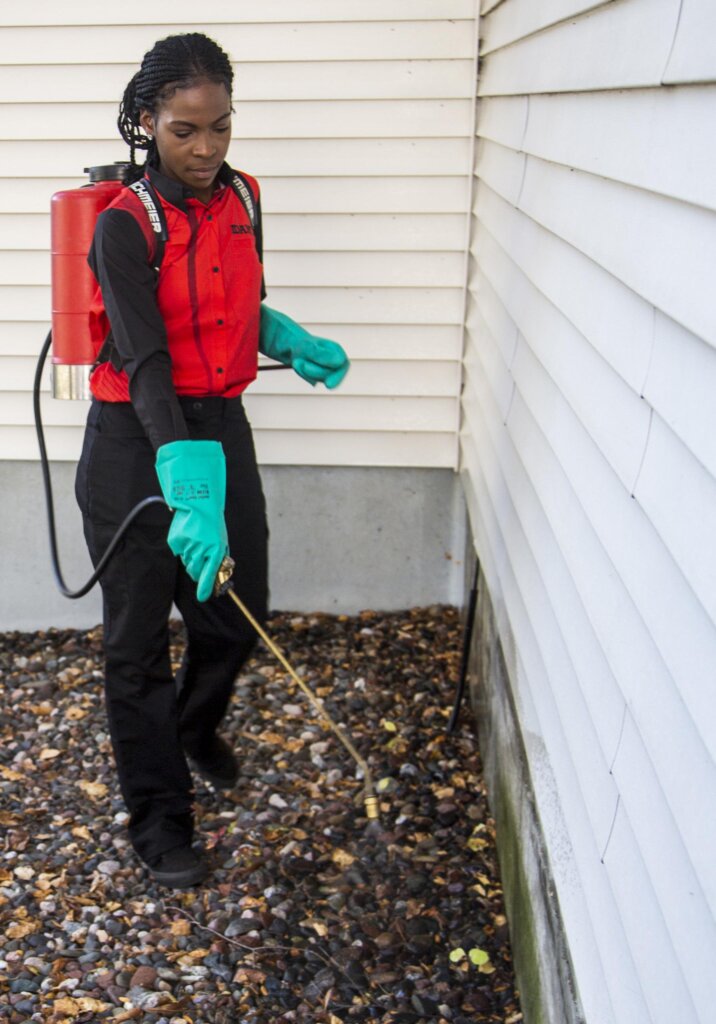Mastering the Art of Parasite Control: Proven Techniques for Long-Term Prevention and Obliteration
Bug infestations can be a persistent difficulty for organizations and property owners alike, requiring a critical method to effectively take care of and eliminate these unwanted intruders. By mastering the art of parasite control through tested strategies for long-lasting prevention and elimination, one can establish an aggressive defense versus potential dangers. Understanding the habits of pests, carrying out incorporated insect monitoring techniques, and making use of natural treatments are simply a few crucial components important to achieving enduring success in this undertaking. However, the ins and outs of maintaining tidiness, performing regular evaluations, and attentive monitoring play similarly vital roles in sustaining a pest-free atmosphere. As the fight versus insects proceeds to advance, adopting an extensive technique comes to be vital in guarding your building from prospective damage.
Understanding Pest Behavior
To effectively carry out pest control techniques, it is important to comprehend the intricate behaviors displayed by different parasites in various settings. Comprehending parasite habits is a fundamental facet of creating efficient insect management strategies. Each bug types has unique habits and choices that influence their activity, reproduction, and feeding patterns. By studying these actions, insect control professionals can recognize one of the most vulnerable points in the pest's life process to target interventions more properly.
As an example, rats like mice and rats are nocturnal creatures that favor dark, secluded rooms close to a food source. a1 portland bed bug exterminator. Knowing this, bug control specialists can focus on securing access factors and removing food attractants to prevent these parasites. On the other hand, bugs such as roaches thrive in warm, damp locations with accessibility to water. By dealing with wetness concerns and securing cracks and gaps, problems can be considerably minimized.
Executing Integrated Bug Administration
Applying Integrated Parasite Monitoring entails making use of an all natural approach to address pest concerns by integrating various control techniques and strategies. This technique emphasizes avoidance, monitoring, and control of bugs with a combination of biological, cultural, physical, and chemical interventions. By incorporating multiple methods, Integrated Pest Administration (IPM) aims to reduce using chemicals while successfully taking care of pest populations.
Avoidance is likewise a fundamental concept of IPM, focusing on removing elements that bring in insects, such as water, shelter, and food. Normal tracking and inspection are necessary to spot bug problems early and stop them from rising.
In addition, IPM advertises the use of environmentally pleasant and sustainable insect control approaches to minimize damage to non-target microorganisms and the surrounding ecological community - a1 portland bed bug exterminator. By taking on an Integrated Insect Administration strategy, organizations and individuals can efficiently take care of parasites while decreasing dependence on chemical pesticides
Making Use Of All-natural Remedies
Building upon the foundation of Integrated Bug Monitoring, a shift towards using natural treatments supplies an environmentally friendly technique to pest control. All-natural solutions harness the power of nature to deter and eliminate insects without using extreme chemicals that can hurt the setting, human beings, and beneficial organisms.

Furthermore, growing pest-repelling plants like marigolds, lavender, and mint around gardens and homes can aid hinder pests naturally. These plants release odors that insects locate undesirable, driving them away without the demand for chemical treatment.
Maintaining Tidiness and Health

Regularly inspecting and cleaning hard-to-reach areas such as behind home appliances, under sinks, and in storage space closets is essential for recognizing and getting rid of possible bug environments. Mess ought to be reduced as pests frequently seek haven in heaps of products or debris. Implementing a regular cleansing routine and guaranteeing all members of the house or staff members are informed on appropriate hygiene techniques can go a lengthy way in pest avoidance. By preserving cleanliness and health requirements, the atmosphere becomes much less welcoming to insects, ultimately sustaining long-term pest control initiatives.
Routine Evaluations and Tracking
Regular assessments and monitoring play a vital duty in proactively identifying and dealing with possible parasite issues before they intensify. By performing regular evaluations of both the interior and outside of a home, bug control specialists can detect early signs of invasions, bug access factors, and problems favorable to insect task.
Regular monitoring permits the very early detection of insect troubles, enabling speedy treatment to avoid prevalent problems that can be pricey and tough to eliminate. Furthermore, regular evaluations and keeping track of aid to conform with regulative requirements and keep a secure, pest-free setting for occupants. Carrying out a proactive strategy through regular examinations and surveillance is a keystone of efficient insect management, giving tranquility of mind and long-term protection versus insect threats.
Verdict
In verdict, understanding the art of bug control includes understanding pest actions, applying integrated pest monitoring, using all-natural treatments, maintaining service pest control sanitation and hygiene, and performing routine inspections and surveillance. By adhering to these proven strategies for long-lasting avoidance and elimination, individuals can efficiently handle bug problems and develop a healthier and more secure atmosphere on their own and their surroundings.
To properly carry out pest control methods, it is necessary to comprehend the complex actions displayed by numerous pests in different settings (a1 commercial pest control portland). By examining these habits, parasite control professionals can determine the most at risk points in the insect's life cycle to target interventions a lot more properly
Implementing Integrated Parasite Administration entails using an all natural method to attend to parasite issues by integrating different control methods and approaches. By keeping review cleanliness and hygiene standards, the atmosphere comes to be less hospitable to parasites, ultimately supporting long-term insect control efforts.
By carrying out routine assessments of both the inside and outside of a building, parasite control specialists can detect very early indicators of problems, parasite access factors, and problems favorable to bug activity.